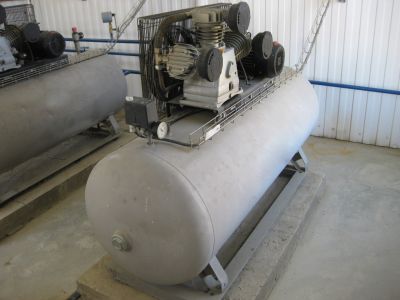Difference Between Rotary And Reciprocating Air Compressors
As compressed air has myriad applications in industries and at home, air compressors are an essential investment for business owners and homeowners.
But when you step out to buy one as a beginner, you will be overwhelmed by the number of options.
The main focus areas while choosing a compressor will be whether you want a rotary or reciprocating variant.
It makes sense to understand the difference between the two so that you can decide which will match your requirements. Let us explain the difference between the two.
The technique of air compression
A rotary air compressor has two rotors turning in the opposite directions. Air gets trapped between them, which results in compressing.
The maximum delivery pressure for the equipment is only 10 bar, and it operates with less heat and vibration. Conversely, the reciprocating variant compresses the air with pistons moving up and down inside the cylinders.
The maximum delivery pressure reaches up to 1000 bar, making it the more powerful option. But it also ends up generating more heat and noise.
It is important to note that the upfront cost and maintenance expenses for the reciprocating compressor are higher than the rotary counterpart.
Purpose of use
Another factor you can use to segregate the types of compressors is the purpose of use because each has a specific application. Rotary air compressors are ideal for applications requiring continuous air.
They are capable of running non-stop and producing a consistent flow of air. Further, they are durable and reliable and perform even in high-stress applications. It makes them the apt choice for commercial and industrial users.
With Reciprocating Air Compressor, you get intermittent supply with only a small amount of air. However, they make a perfect pick for DIY projects, homeowners, small businesses, workshops, and construction sites.
It also works well when you need not use it continuously.
Sustainability
Compared to the reciprocating variant, the rotary variant is more sustainable. The air it delivers does not come in direct contact with the lubricating oil, which makes it clean and pollutant-free.
Further, it is also energy-efficient, which makes it score well on the sustainability front. But the air delivered by reciprocating compressors is comparatively less clean because of its exposure to the lubricating oil used to keep the pistons in good shape.
From the energy-efficiency perspective, reciprocating compressors are marginally better as they compress the same amount of gas with 5-10 percent less energy input. Still, the upfront cost and maintenance expenses may make you think twice about the installation.
Both the options have pros and cons, but the choice depends mainly on your purpose of use. If you need one for industrial use, you cannot settle for a smaller and less powerful compressor that will not serve the purpose.
It is better to understand the features of both types first and decide the one that will suffice your needs. Also, do not let the pricing decide because suitability matters the most when it comes to buying this piece of equipment for the long run.







